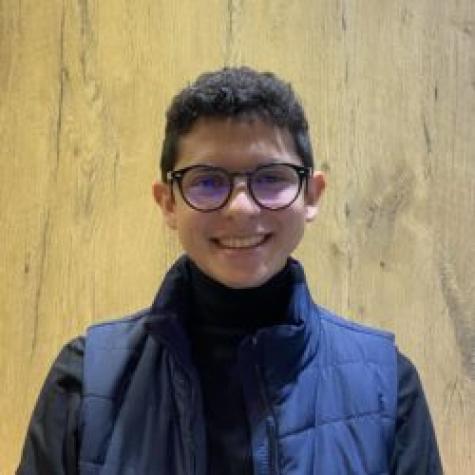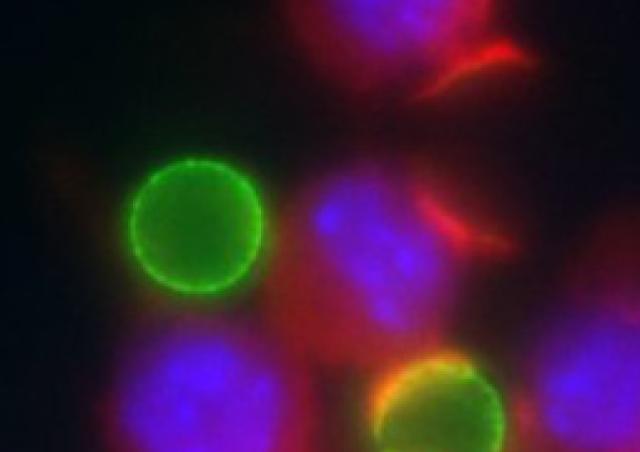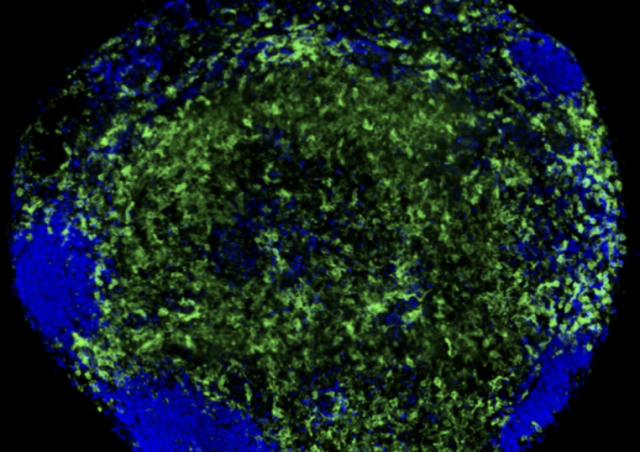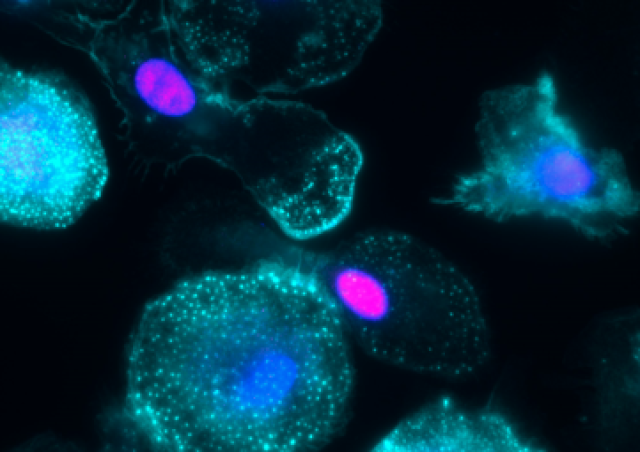Team members

Project
The interferon beta (IFNB) response is a main cellular actor of the innate antiviral response necessary to stop viral replication and propagation. A fine-tuning of the IFNB response is required in order to rapidly stop viral replication and propagation while limiting its negative side effects, especially in the brain where de-regulated IFNB expression has been associated to cognitive disorders and neurodegenerative diseases.
In continuity with our previous work on host-viral interactions and the regulation of IFNB gene expression (Bamia, 2021; Marcato, 2016; Josse, 2012; Mansuroglu, 2010; Le May, 2008), we are presently working on the role of the IFNB response on microglia activation, neuron/microglia crosstalk and Tau pathology in the context of viral infection. Specially in the case of Zika virus (ZIKV), a neurotropic Flavivirus for which there is now evidence in humans, macaques and mice that delayed neuropathies of the central nervous system (CNS), associated with cognitive disorders, can develop following neonatal and adult ZIKV infections. Yet, how mature neurons respond to ZIKV remains mostly unexplored.
While working in vitro, with primary cultures of neurons and microglia (separately and combined) and in vivo, following intracranial ZIKV inoculation of young adult immunocompetent mice we have demonstrated that ZIKV infection induces a delayed neuronal IFNB expression and response specifically impairing the capacity of neurons to stop viral replication (Manet, 2022 under submission). The accumulation of ZIKV RNA on infected neurons appeared correlated to the pathological phosphorylation of Tau (pTau) protein, a major constituent of neurons whose abnormal phosphorylation and aggregation is associated with neurodegeneration and for which we have established a role in maintaining the integrity of the neuronal genome (Mokrani-Benhelli, 2018; Mansuroglu, 2016; Sultann, 2011). We also observed the presence of pTau in vivo, in the brain of ZIKV-infected mice where clusters of pTau-labeled neurons were surrounded by reactive non-infected microglial cells.
Microglia are the phagocytic cells of the brain that play a role in immunosurveillance, neuroprotection and shaping neuronal circuits. Alteration of microglia activation in response to infection can lead to abnormal phagocytosis of functional synapses and subsequent cognitive disorders. Presently, our results indicate a major role for IFNB in activating microglial cells in the context of vial infections.
Our work is carried out in close collaboration with Xavier Montagutelli (Mouse Genetics laboratory, Institut Pasteur) and Marie-Christine Galas (Alzheimer & Tauopathies laboratory, UMRS1172). It is financed by CNRS, INSERM, Université Paris Cité, European Joint Program Neurodegenerative Disease (JPND) project INSTALZ (03/2016-03/2019 coordinated by M-C.Galas) and an ongoing ANR NeuroZika grant (10/2020-10/2024 coordinated by E.Bonnefoy).
References
- Le May N, Mansuroglu Z, Léger P, Josse T, Blot G, Billecocq A, Flick R, Jacob Y, Bouloy M, Bonnefoy E (2008) A SAP30 complex inhibits IFN-b expression in Rift Valley Fever Virus infected cells. PloS Pathog. 4, e13.
- Mansuroglu Z, Josse T, Gilleron J, Billecocq A, Leger P, Bouloy M, Bonnefoy E (2010) Nonstructural NSs protein of rift valley fever virus interacts with pericentromeric DNA sequences of the host cell, inducing chromosome cohesion and segregation defects. J Virol 84: 928-939.
- Sultan A, Nesslany F, Violet M, Bégard S, Loyens A, Talahari S, Mansuroglu Z, Marzin D, Sergeant N, Humez S, Colin M, Bonnefoy E, Buée L, Galas MC (2011) Nuclear tau, a key player in neuronal DNA protection. J Biol Chem 286: 4566-4575.
- Josse T, Mokrani−Benhelli H, Benferhat R, Shestakova E, Kakanakou H, Mansuroglu Z, Billecocq A, Bouloy M, Bonnefoy E (2012) Association of the interferon−beta gene with pericentromeric heterochromatin is dynamically regulated during virus infection through a YY1−dependent mechanism. Nucleic Acids Res 40 : 4396-4411.
- Marcato V, Luron L, Laqueuvre LM, Simon D, Mansuroglu Z, Flamand M, Panthier JJ, Souès S, Massaad C, Bonnefoy E (2016) Beta-catenin up-regulates the constitutive and virus-induced transcriptional capacity of the interferon-b promoter through T-cell factor binding sites. Mol Cell Biol 36:13-29.
- Mansuroglu Z, Benhelli-Mokrani H, Marcato V, Sultan A, Violet M, Chauderlier A, Delattre L, Loyens A, Talahari S, Bégard S, Nesslany F, Colin M, Souès S, Lefebvre B, Buée L, Galas MC, Bonnefoy E (2016) Loss of Tau protein affects the structure, transcription and repair of neuronal pericentromeric heterochromatin. Sci Rep. 6:33047.
- Mokrani-Benhelli H, Mansuroglu Z, Chauderlier A, Albaud B, Gentien D, Sommer S, Schirmer C, Laqueuvre L, Josse T, Buée L, Lefebvre B, Galas MC, Souès S, Bonnefoy E (2018) Genome-wide identification of genic and intergenic neuronal DNA regions bound by Tau protein under physiological and stress conditions. Nucleic Acids Res. 46:11405-11422.
- Bamia A, Vasco Marcato V, Boissière M, Mansuroglu Z, Tamietti C, Romani M, Simon D, Tian G, Niedergang F, Panthier JJ, Flamand M, Souès S, Bonnefoy E. (2021) The NSs Protein Encoded by the Virulent Strain of Rift Valley Fever Virus Targets the Expression of Abl2 and the Actin Cytoskeleton of the Host, Affecting Cell Mobility, Cell Shape, and Cell-Cell Adhesion. J Virol. 95:e01768-20.

















